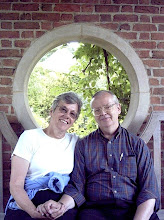Our reality evolves because every once in a while we find that we need to edit part of the program that describes reality. We may find that this piece of the program, based on a certain model, is refuted (the underlying model is found to be inaccurate), and hence the program needs to be updated. Refuting a model and changing a part of the program is, as we saw, crucial to changing reality itself because refutations carry much more information than simply confirming a model.
These refutations are manifested as ‘no-go’ principles. Physics is littered with them. The Second Law of thermodynamics, which we saw was one of the most general laws of physics, is phrased to prohibit any transfer of heat from a cold to a hot body without any other effect. So, the Second Law would say that while we do not stipulate what physical processes can do, we certainly do know what they cannot do. Whilst we know the ‘known knowns’ and ‘known unknowns’ we do not know the ‘unknown unknowns’. And this is very powerful, because it is extremely general. The same is true for the theory of relativity, as relativity tells us that you cannot travel faster than the speed of light.
When it comes to quantum mechanics, this ‘no-go’ way of speaking stretches our imagination to its limits. When we said that quantum mechanically an object can exist in two different places at once, this state is very difficult to understand using our everyday intuition. In fact, if we use the negative way, we are forced to acknowledge that (in some sense) it is not true that the object is in two places at once’. So the statements that ‘an object is in two places at once’ as well as its opposite ‘an object is not in two places at once’ are both untrue. How can that be? It seems logically impossible that a statement and its negation are both incorrect. While to some this may be a contradiction, to Bohr this pointed to a deeper wisdom. He is reported to have said: ‘A shallow truth is a statement whose opposite is false; a deep truth is a statement whose opposite is also a deep truth’.
— Vlatko Vedral, Decoding Reality, pp. 192-193.
….What we can say, following the logic presented in this book, is that outside of our reality there is no additional description of the Universe that we can understand, there is just emptiness. This means that there is no scope for the ultimate law or supernatural being — given that both of these would exist outside of our reality and in darkness. Within our reality everything exists through an interconnected web of relationships and the building blocks of this web are bits of information. We process, synthesize, and observe this information in order to construct the reality around us. As information spontaneously emerges from the emptiness we take this into account to update our view of reality. The laws of Nature are information about information and outside of it there is just darkness. This is the gateway to understanding reality.
And I finish with a quote from the Tao Te Ching, which some 2500 years earlier, seems to have beaten me to the punch-line:
The Tao that can be told is not the eternal Tao.
The name that can be named is not the eternal name.
The nameless is the beginning of heaven and earth.
The named is the mother of the ten thousand things.
Ever desireless, one can see the mystery.
Ever desiring, one sees the manifestations.
These two spring from the same source but differ in name; this appears as darkness.
Darkness within darkness.
The gate to all mystery.
— Vlatko Vedral, Ibid., p. 218.
Subscribe to:
Post Comments (Atom)

No comments:
Post a Comment